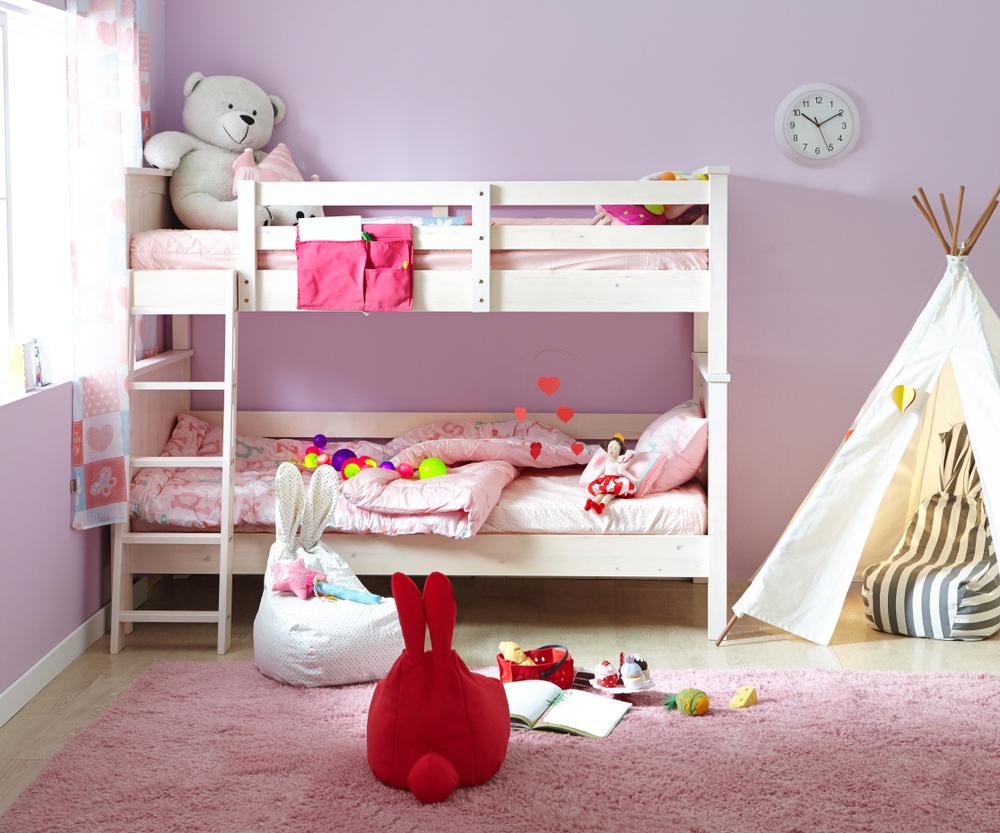5 Tips for Ultimate Bunk Bed Safety
At Children's Bed Shop, we know how much children love the idea of sleeping in a bunk bed. They're fun, space-saving, and a practical solution for shared bedrooms. But as exciting as bunk beds can be, safety must always come first. With the right setup and some careful rules, bunk beds can be just as safe as they are enjoyable.
We've worked with thousands of families over the years, and one thing we've learned is that peace of mind is priceless. When we help parents choose the right bunk bed, safety is always at the top of the checklist. In this blog, we're sharing five simple yet essential tips that every parent can follow to ensure their child sleeps soundly and safely.
Choose the Right Bunk Bed Design
Not all bunk beds are created equal, and that's why we take great care in selecting our range. When choosing a bunk bed, it's important to look for a solid frame, high safety rails, and a stable ladder. We also recommend thinking carefully about your child's age and how confident they are sleeping at height. Some bunk beds are better suited to older children, while others have lower sleeping platforms and sturdier guard rails designed with younger ones in mind. At Children's Bed Shop, we're always happy to advise on which model best suits your child's needs and the layout of your room.
Set a Minimum Age For the Top Bunk
We're often asked at what age a child can safely sleep on the top bunk. The general guidance is that children under six years old should not sleep on the top level. This might seem a little cautious, but we believe it's better to err on the side of safety. Younger children can find it difficult to navigate ladders, especially if they need to get up in the night.
We encourage parents to talk to their children about why the top bunk has age restrictions. By explaining that it's not about being unfair but about keeping everyone safe, we find most children understand and are willing to wait their turn. In the meantime, the bottom bunk can be just as cosy, and sometimes even more so with a few added pillows and fairy lights.
Make Climbing Safe and Easy
The ladder might seem like a small part of the bunk bed, but it's something we always pay close attention to. It needs to be strong, firmly attached to the frame, and have steps that are easy to grip. Some ladders are vertical, while others have a slight angle, which can be easier for little feet to climb.
Keep the Space Around the Bunk Bed Clear
Once the bunk bed is in place, it's important to keep the surrounding area as tidy as possible. Toys, shoes, or storage boxes left near the base of the ladder can quickly become trip hazards. We always suggest doing a quick sweep of the area before bedtime. It only takes a minute and helps keep everyone safe.
It's also important to check how close the top bunk is to the ceiling or any overhead light fittings. Children should be able to sit up in bed without bumping their heads, and there should be enough space above for them to climb in and out comfortably.
Check the Bed Regularly for Wear and Tear
Even the best quality bunk beds need regular checks to stay in top condition. We advise giving the frame a quick inspection every couple of weeks, especially if your children are active sleepers or if they've had a particularly energetic play session on the bed.
Look out for any loose screws, wobbly guard rails, or signs of wear in the ladder. Many of our customers find it helpful to keep an Allen key handy so small adjustments can be made without delay.
Keeping Bedtime Safe and Stress-Free
At Children's Bed Shop, we believe bedtime should be a relaxing, enjoyable part of the day for the whole family. Bunk beds can add an element of fun and adventure, especially in shared rooms, but they also come with responsibilities. By choosing a well-designed bunk bed, setting clear rules, and undertaking regular safety checks, we can all help make bunk bed safety second nature.

























